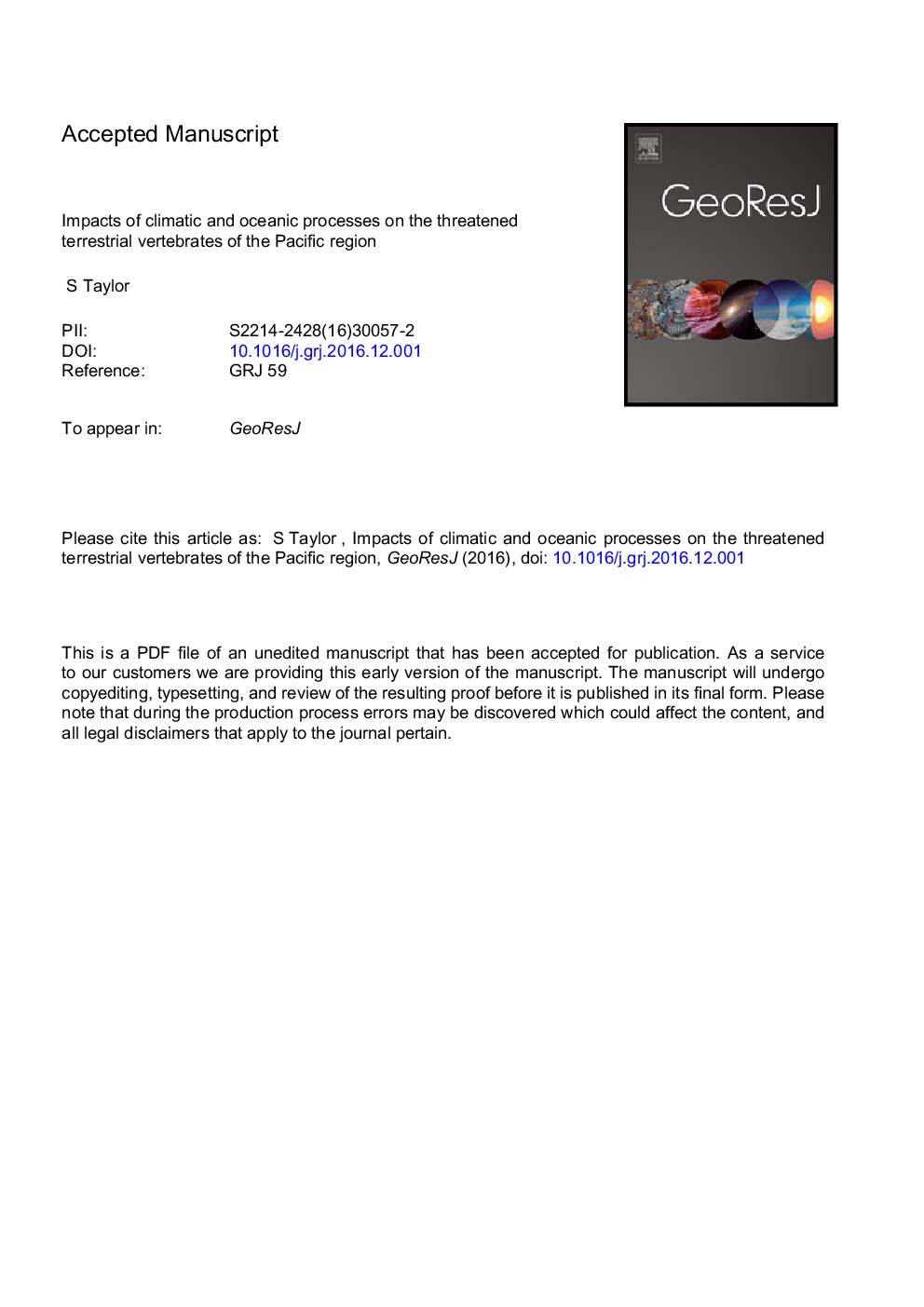| Article ID | Journal | Published Year | Pages | File Type |
|---|---|---|---|---|
| 5779199 | GeoResJ | 2017 | 25 Pages |
Abstract
The small island nations and territories of the Pacific region are low-lying with a high ratio of shoreline to land area. These characteristics intensify the susceptibility of the islands and the biodiversity that they support to environmental changes. The islands are already experiencing higher temperatures, shifts in rainfall patterns, rising sea levels and changes in frequency and intensity of extreme climatic events. This study undertook a broad-scale assessment of the impacts of climate change and sea level rise on the threatened terrestrial vertebrate biodiversity of 23 countries and territories in the region. A database of indicative susceptibility of islands to climatic and oceanographic processes was used with the distribution data of 150 threatened terrestrial vertebrate species downloaded from International Union for Conservation of Nature and Natural Resources (IUCN). Fifty six percent of these species were endemic to the region. Thirty islands spread over five countries were identified which supported three or more threatened species but were also ranked as very highly or highly susceptible to climatic and oceanographic processes. Twelve additional species were identified, three of which are critically endangered, with distribution on islands with very high or high susceptibility. An analysis with the global protected area network dataset showed that none of the identified islands occurred in a conservation area. A more forward looking conservation strategy would involve prioritization programmes which anticipate the impacts of climate change so that future species' ranges and “climate refugia” can be identified especially if translocation is essential for the protection of threatened biodiversity.
Related Topics
Physical Sciences and Engineering
Earth and Planetary Sciences
Atmospheric Science
Authors
S Taylor,
